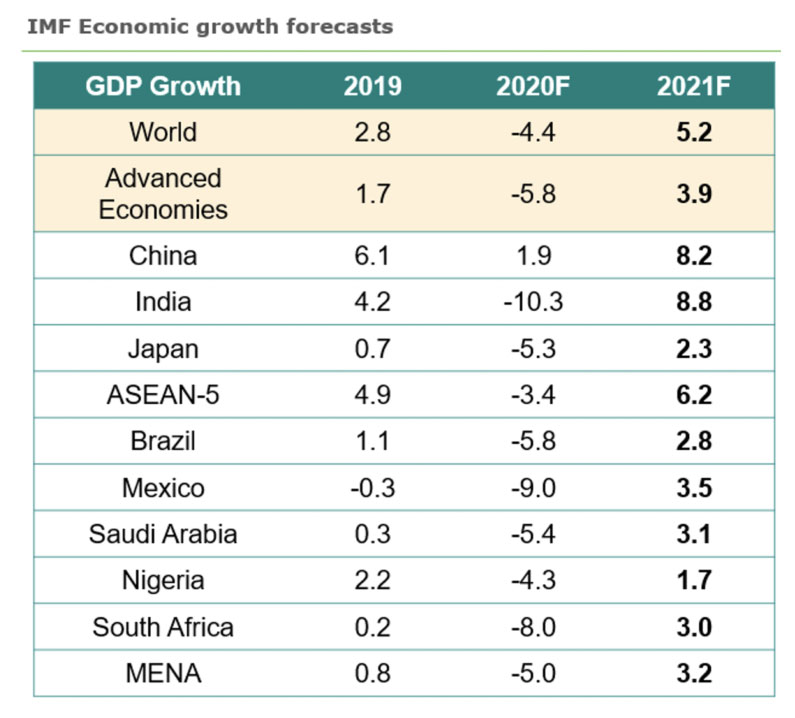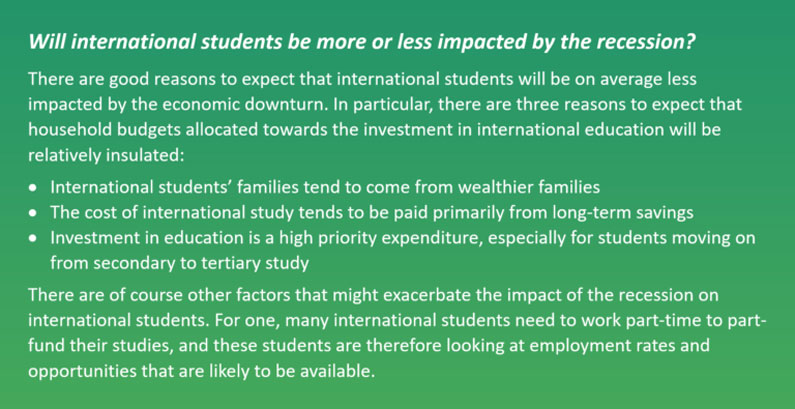Road to Recovery: Reason to be optimistic #3

While the pandemic continues to cause uncertainty for the mobility of international students and the short-term future of the global education sector, you could be forgiven for having a pessimistic outlook. However, our Road to Recovery work which considers global data trends from across the sector and insights from our own agent community, gives us reason to feel more confident about the recovery of international education.
In this series of Insights pieces, Jon Chew (Head of Strategic Insights and Analytics at Navitas) shares five reasons to be optimistic, which were initially shared at the Navitas Virtual Business Partners Conference held in January 2021.
Reason to be optimistic #3: The recovery could come sooner and stronger than we expect (subject to political will)
The economic downturn has been severe, but the recovery is anticipated to be swift due to ample economic stimulus in many countries and the absence of underlying structural issues.
While uncertainty remains, the global economy is expected to fully recover to pre-pandemic levels in 2021.
Following the contraction in 2020 and recovery in 2021, the level of global GDP in 2021 is expected to be a modest 0.6 percent above that of 2019.
– IMF World Economic Outlook, October 2020
Some more bullish observers like Morgan Stanley expect that global GDP growth could be as high as 6.4% in 2021, led first by emerging markets. This prediction would see the entire world rebound at a growth rate equivalent to China’s growth rate in 2019.
This v-shaped economic recovery — a short, sharp recession followed by an equally strong rebound — is anticipated across most countries. China of course has the notable distinction of avoiding an economic contraction altogether in 2020.


The economic recovery is very closely tied to the development and successful deployment of vaccines. The rapid development, testing and approval of vaccines has been nothing short of remarkable and there are promising signs that vaccination programs are effective in reducing the virus. Israel for example, has already seen significant reduction in confirmed cases and hospitalisations in cities with high levels of vaccination.
The UK has similarly launched a huge scale vaccination program with 500,000 doses delivered per day as of late January. In January, the USA has been administering on average 1.3 million doses per day. President Biden’s commitment to administer 100 million shots in the first 100 days was a remarkable promise, but it now looks like it will in fact be comfortably reached.
There are however, three common concerns which cannot be ignored. First, there is some concern around vaccine efficacy — in particular, how long will it provide immunity and how will it cope with different strains? Second, how might vaccine acceptance impact on the rollout, especially in some countries where there is a high level of distrust of vaccines? Third, supply and distribution concerns remain especially for developing countries. From a distribution perspective, developing countries might not have a sufficiently mature public health infrastructure to easily implement a comprehensive vaccination program and logistical requirements of some vaccines, such as Pfizer-Moderna which requires cold storage, will present additional challenges.
When we think about the end of the pandemic, we tend to think about the elimination of COVID-19, or achieving herd immunity. This is known as the epidemiological endpoint — it is worth considering whether the international education sector’s recovery is dependent on the epidemiological endpoint. We would propose that the road to recovery would potentially come much sooner.
The free-flow of international student travel at scale can potentially resume if we have (1) vaccines for vulnerable populations and front-line staff, (2) immunity passports/vaccination certificates for travellers, and (3) political will. It is important to appreciate the benefit of vaccinating the vulnerable population, and the impact this will have on markedly reducing the fatality rate and relieving the pressure on health systems.
With the three main vaccines that have been approved, there are already enough doses in planned production to cover the vulnerable global population. A further 170+ vaccines still under development add to the potential upside, especially in developing countries. Promising phase three clinical trial results from Novavax and Johnson & Johnson, including the potential for a single dose regime in the case of the Johnson & Johnson vaccine, are indicative of the potential upside.
One final consideration that might suggest a sooner than expected recovery in global student flows is the strong level of optimism in our last agent survey, with many agents expecting a recovery approaching 2019 levels by the end of 2021.
Navitas is cautiously optimistic that with the right government policies, the recovery could come sooner and stronger than anticipated.
This Insight article is one in a series of five reasons to be optimistic. Read the full article here.
Reason to be optimistic #4: As part of the economic recovery, pro-migration policies will emerge.